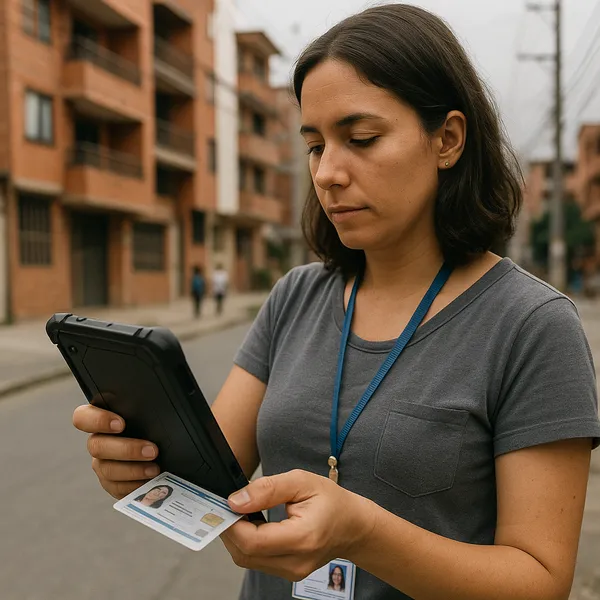Longitudinal Tracking Methodologies for Nutrition and Livelihood Capital
Published on: Fri Jun 18 2021 by Ivar Strand
Introduction
Modern food security programming has evolved significantly. The approach has moved beyond the simple provision of emergency food aid towards a more holistic model designed to build long-term household resilience. Many contemporary programs are now structured around an integrated, dual-focus strategy: they seek to address immediate, acute malnutrition through direct nutritional support while simultaneously building sustainable economic capacity through livelihood development activities.
This integrated design presents a distinct monitoring challenge. The two core components of such programs operate on different timelines, target different indicators, and require different verification methodologies. A tracking system designed to verify the monthly distribution of supplementary foods is not well-suited to assess the long-term adoption of new agricultural practices. The problem, therefore, is how to design and implement a single, coherent tracking framework that can effectively monitor both the delivery of short-term nutritional inputs and the uptake and effectiveness of long-term livelihood interventions.
The Two Pillars of Integrated Programming
A successful tracking system must begin with a clear understanding of the two distinct, yet interconnected, pillars of these programs.
1. The Nutrition Component: Addressing Acute Needs This pillar is focused on providing direct support to address immediate and life-threatening malnutrition, particularly among the most vulnerable groups like children under five and pregnant and lactating women. Interventions typically include supplementary feeding programs, the distribution of specialized, fortified foods (e.g., Plumpy’Nut), and the provision of micronutrient supplements. The success of this component is measured by health and anthropometric indicators, such as a reduction in the prevalence of wasting and stunting, and it operates on a relatively short and intensive timeline.
2. The Livelihood Component: Building Long-Term Capacity This pillar is focused on building the economic resilience of households to enable them to achieve food security independently in the long term. Interventions are diverse and can include agricultural support (such as providing seeds, tools, and training in climate-smart farming techniques), livestock distribution, vocational skills training, or the provision of grants and technical support for small business start-ups. The success of this component is measured by economic and behavioral indicators—such as increased household income, asset diversification, and the adoption of new, more productive practices—and it requires a longer-term perspective.
A Dual-Focus Framework for Program Tracking
Given these differences, a “one-size-fits-all” monitoring approach is bound to fail. An effective framework must employ distinct methodologies to track each component, while allowing for an integrated analysis.
Part A: Tracking the Nutrition Component
The focus here is on verifying the integrity of the supply chain and the proper utilization of nutritional products.
- Method 1: Supply Chain and Distribution Verification. This involves conducting spot-checks at warehouses and local health facilities to verify that specialized nutritional products are being stored correctly and that inventory management is sound. This step confirms that the inputs are available and safe for consumption at the point of distribution.
- Method 2: Beneficiary-Level Follow-up. Tracking must go beyond the clinic door. This requires regular follow-up visits with a sample of households receiving nutritional support. Through structured interviews with mothers or caregivers, monitors can verify that the household has received the correct quantity of supplements and, crucially, assess whether the products are being used correctly and for the intended child.
Part B: Tracking the Livelihood Component
The focus here is on tracking the journey from receiving an asset to adopting a new, sustainable practice.
- Method 3: Input and Asset Verification. This is the initial step to confirm that households have received the intended livelihood support. This can involve physically verifying the delivery of assets like seeds, tools, or livestock, or cross-referencing financial records to confirm the disbursement of small business grants. For training activities, it involves checking attendance records and interviewing participants to confirm their presence.
- Method 4: Assessing Practice Change and Early Adoption. This is the most critical step in livelihood monitoring. At Abyrint, we have found that verifying input delivery is insufficient. True progress is indicated by a change in behavior. This requires a second round of monitoring several months after the initial distribution to assess whether new practices have been adopted. Are farmers using the drought-resistant seeds and the conservation agriculture techniques they were taught? Has the small business grant been invested in a viable enterprise? This provides a crucial leading indicator of the program’s long-term potential for impact.
From Short-Term Relief to Long-Term Resilience
The ultimate goal of an integrated program is to create a virtuous cycle where the livelihood activities lead to sustainable improvements in household food security, thereby reducing and eventually eliminating the need for direct nutritional support. The tracking system must be designed to assess this link. The analytical process should connect the data streams from both pillars, looking for evidence that households successfully adopting new livelihood strategies are also demonstrating improved nutritional outcomes.
This dual-focus tracking system allows program managers and financing agencies to maintain oversight of both immediate and long-term objectives. It provides assurance that life-saving nutritional support is reaching the vulnerable in the short term, while simultaneously gathering the evidence needed to determine if the program is on a credible path toward its most important goal: building the lasting household resilience that is the true measure of success.


